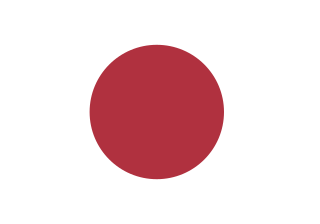The following table shows comparative officer ranks of World War II, with the ranks of Allied powers, the major Axis powers and various other countries and co-belligerents during World War II.
Military ranks and rank insignia of Norway were changed June 1, 2016, with the reintroduction of the Non-Commissioned Officer Corps, and the abolishment of the one-tier officer system in place since 1975.
The following table shows comparative officer ranks of several Allied and Central powers during World War I.
Each officer rank in the navy of a NATO country may be compared with the ranks used by any military service in other NATO countries, under a standardized NATO rank scale. This is useful, for instance, in establishing seniority amongst officers serving alongside each other within multinational command structures.

The Ranks of the Imperial Japanese Army were the rank insignia of the Imperial Japanese Army, used from its creation in 1868, until its dissolution in 1945 following the Surrender of Japan in World War II.

The Ranks of the Imperial Japanese Navy were the rank insignia of the Imperial Japanese Navy, used from its creation in 1868, until its dissolution in 1945 following the Surrender of Japan in World War II. The ranks were inspired by the ranks of the Royal Navy And also from the former navy of the Tokugawa shogunate.
The Military ranks of Romania are the military insignia used by the Romanian Armed Forces.
The Military ranks of the Republic of China are the ranks used by the Republic of China Armed Forces. The official military rank names in Traditional Chinese are identical across all different military branches, but their English translations may be different.
The Military ranks of Socialist Yugoslavia are the military insignia used by the Yugoslav People's Army.
The Military ranks of Serbia are the military insignia used by the current Serbian Armed Forces and historical Royal Serbian Army.
Individual rank insignia to the (Army) ground forces and (Navy) naval forces (1935–1940) were established by orders 2590 and 2591, effective from September 22, 1935.
Between 1943 and 1955, the ranks and insignia of the Soviet Armed Forces were characterised by a number of changes, including the reintroduction of rank insignia badges and the adoption of a number of higher ranks.
Air squadron general is a general officer rank in the Italian Air Force and formerly of the Royal Romanian Air Force.
The Military ranks of Montenegro are the military insignia used by the Armed Forces of Montenegro.
The Military ranks of the Kingdom of Italy were the military insignia used by the Italian Armed Forces when Italy was the Kingdom of Italy (1861–1946). During the World Wars, the Carabinieri, as the then-most senior corps of the Army, wore similar insignia to those used by the rest of the service.
The Military ranks of the Italian Social Republic were the military insignia used by the National Republican Army of the Italian Social Republic. The ranks were essentially the same as the military ranks of the Kingdom of Italy, however, with the symbols of the monarchy removed.
The Military ranks of the Kingdom of Yugoslavia were the military insignia used by the Royal Yugoslav Armed Forces. It replaced the ranks of the Kingdom of Serbia following the unification of the Kingdom of Serbia into Kingdom SHS. After the proclamation of the Socialist Federal Republic of Yugoslavia, the ranks were replaced by the Yugoslav People's Army ranks.
The Military ranks of the Kingdom of Hungary were the military insignia used by the Kingdom of Hungary. Following the fall of the monarchy, the ranks were replaced with those of the Hungarian People's Army.
The military ranks of Slovakia during 1939–1945 were the military insignia used by the Slovak Republic's military and the Hlinka Guard. The Slovak Republic was a landlocked country, and therefore did not possess a navy.
The Military ranks of the Kingdom of Bulgaria were the military insignia used by the Kingdom of Bulgaria. Following the abolition of the monarchy, the ranks were also changed.



































































